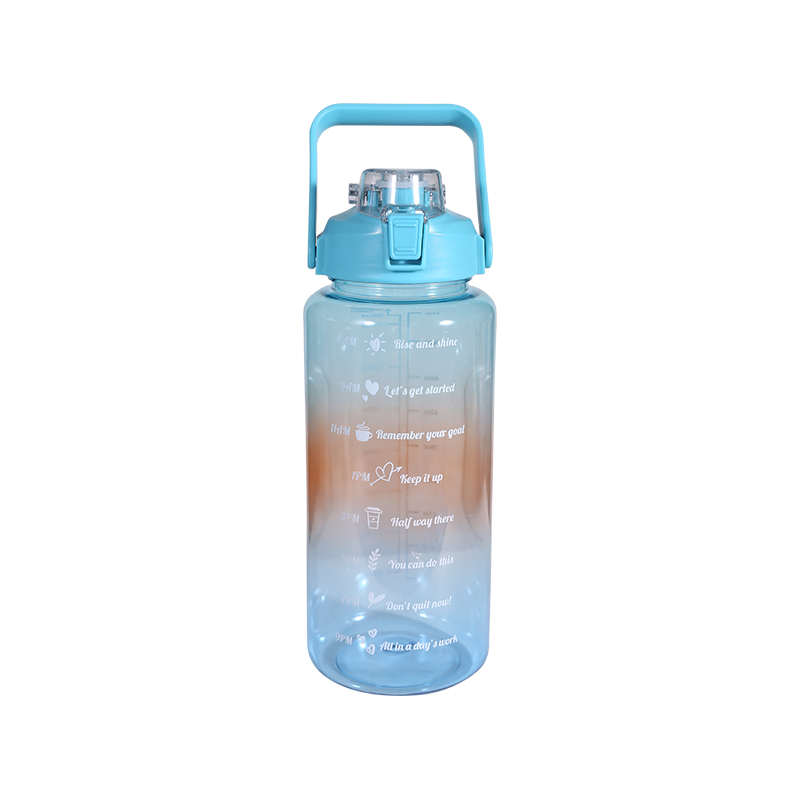Introduction to Material Safety Concerns
As consumers become more health-conscious, the safety of materials used in everyday products like Leak Proof Plastic Water Bottles has gained increased attention. These bottles are intended for frequent contact with drinking water and other beverages, making material safety critical to prevent chemical leaching and ensure user health. This article explores the types of plastics commonly used in these bottles, their safety profiles, and certifications that guarantee consumer protection.

Common Materials in Leak Proof Plastic Water Bottles
Leak Proof Plastic Water Bottles are typically made from plastics such as Tritan, polypropylene (PP), polyethylene (PE), or high-density polyethylene (HDPE). Tritan, a copolyester, is popular due to its durability and clarity, resembling glass but with higher impact resistance. Polypropylene and polyethylene are widely used for their chemical resistance, lightweight properties, and affordability. These materials are selected not only for their physical performance but also for their safety characteristics.
BPA and Other Chemical Concerns
One of the main concerns regarding plastic water bottles is the presence of Bisphenol A (BPA), a chemical once commonly used in plastics that has been linked to potential hormonal disruptions. Fortunately, most modern Leak Proof Plastic Water Bottles are manufactured BPA-free, replacing harmful substances with safer alternatives. Manufacturers often highlight BPA-free status as a key selling point, reassuring consumers that their bottles do not release harmful chemicals during normal use.
Certifications and Safety Standards
To ensure material safety, reputable Leak Proof Plastic Water Bottles comply with various international standards and certifications. These include FDA approval for food contact safety, LFGB certification in Europe, and tests for the absence of toxic substances. Such certifications require extensive laboratory testing to confirm that the materials do not leach harmful chemicals into liquids under normal usage conditions, including exposure to heat or prolonged storage.
Durability and Chemical Stability
The plastics used in Leak Proof Plastic Water Bottles are engineered to be chemically stable, meaning they resist breaking down or releasing compounds over time. This stability is important to maintain safety throughout the bottle’s lifecycle. Durable plastics also withstand repeated cleaning and exposure to temperature variations without degradation, further reducing any risk of contamination from the material itself.
User Considerations for Material Safety
While manufacturers use safe materials, users should follow guidelines to maintain bottle safety. Avoid exposing bottles to extreme heat or microwaving them unless explicitly stated as safe, as high temperatures may increase chemical migration risks. Proper cleaning using mild detergents and avoiding abrasive tools helps preserve the integrity of the material. Replacing bottles periodically also ensures continued safety and hygiene.
Environmental and Health Balance
Leak Proof Plastic Water Bottles not only focus on user health but increasingly consider environmental impact by using recyclable and BPA-free materials. These efforts reflect a growing demand for products that are safe for both people and the planet. Choosing bottles made from tested and certified materials supports a sustainable lifestyle without compromising safety.
Conclusion: Confidence in Safe Materials
In summary, Leak Proof Plastic Water Bottles today are made from carefully selected, tested, and certified materials that prioritize user health and safety. BPA-free plastics such as Tritan and polypropylene offer durability and chemical stability, reducing any risks associated with plastic use. When used and maintained properly, these bottles provide a safe, reliable option for everyday hydration needs, giving consumers peace of mind regarding material safety.

 English
English 中文简体
中文简体 Español
Español